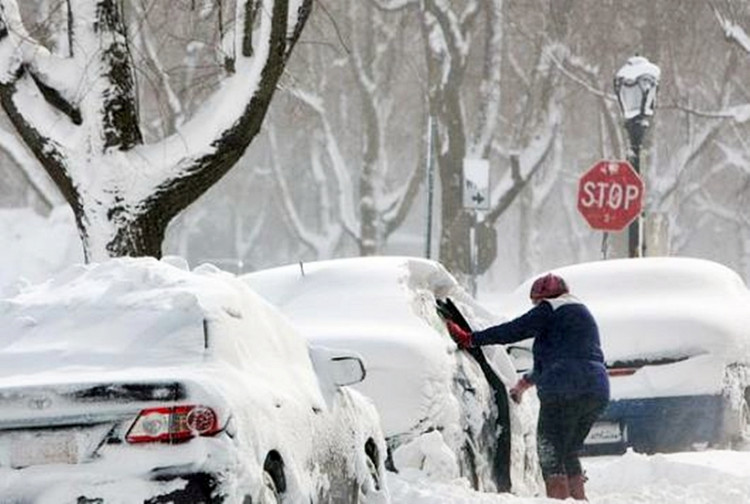The United States is grappling with a series of powerful winter storms that have unleashed tornadoes in the South, dumped heavy snowfall across the Midwest, and led to widespread power outages. The severe weather conditions have disrupted daily life, leading to road closures, school cancellations, and significant challenges for emergency services.
In the South, tornado warnings and high winds caused extensive damage. In Florida, roofs were torn off homes, campers overturned, and debris scattered. Tragically, the storms led to at least three deaths in the region. A wind gust of 106 mph was recorded in Walton County, Florida, and Charlotte Paschal, an 81-year-old Alabama resident, lost her life when her mobile home was uprooted by a suspected tornado.
The storm's impact extended to politics, with former President Donald Trump's campaign canceling events in Iowa due to the adverse weather. White House Press Secretary Karine Jean-Pierre urged Americans to stay vigilant and monitor the weather closely.
In the Midwest, the situation was equally dire, with cities buried under more than half a foot of snow, causing travel chaos and stranding motorists. The snowstorm, moving towards the Northeast, is expected to be followed by subzero temperatures. In Des Moines, Iowa, residents like Laura Burianov face the arduous task of repeated shoveling to keep pathways clear.
The Northeast braces for the storm's arrival, with New Jersey Governor Phil Murphy declaring a state of emergency. In New York City, nearly 2,000 migrants were evacuated from a tent complex due to predicted wind speeds exceeding 70 mph.
The power outages have been extensive, affecting over 200,000 customers in Florida, Alabama, Georgia, and nearly 150,000 in North Carolina. Catawba County, North Carolina, reported a fatality and critical injuries due to a suspected tornado. I-95 in North Carolina was shut down due to downed power lines.
In South Carolina, the storm damaged about 40 homes and businesses in Bamberg, blocking a major highway.
Moving to the Midwest, the snowstorm started Monday, potentially blanketing areas from Colorado to Michigan. Kansas, Nebraska, Iowa, Missouri, and Illinois have already experienced significant snowfall. Madison, Wisconsin, and northwestern Illinois are under winter storm warnings, with Chicago and Gary, Indiana, facing advisories.
Road conditions in Wisconsin contributed to a fatal crash early Tuesday, and in Michigan, a woman died after a car collision due to slushy highways.
As the storm advances east, concerns grow about flooding in regions like New England. Power companies, such as National Grid, are preparing for potential outages and hazardous conditions.
The Southwest also feels the cold front's impact, with below-freezing temperatures reported in parts of Arizona and New Mexico. The state's Department of Transportation worked to clear snow-covered highways.
Ahead of a brutal freeze expected to hit the region, power outages have already affected several states. North Carolina, Pennsylvania, and New York are among the hardest hit, with significant power outages reported.
This extreme weather recalls the February 2021 freeze and the December 2022 storm that nearly collapsed power and natural gas systems in parts of the U.S. The current storm, covering most of the country east of the Mississippi River, is expected to bring the coldest weather since December 2022.
The situation serves as a stark reminder of the challenges posed by severe weather and the need for preparedness and resilience in the face of increasingly unpredictable climate patterns.






